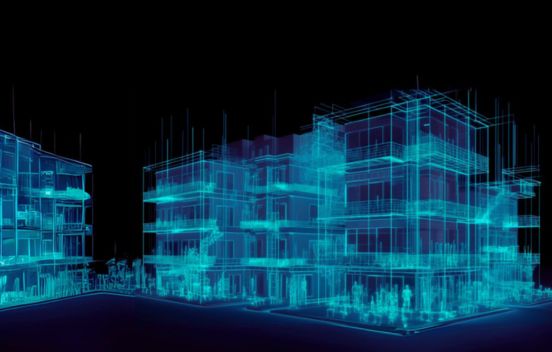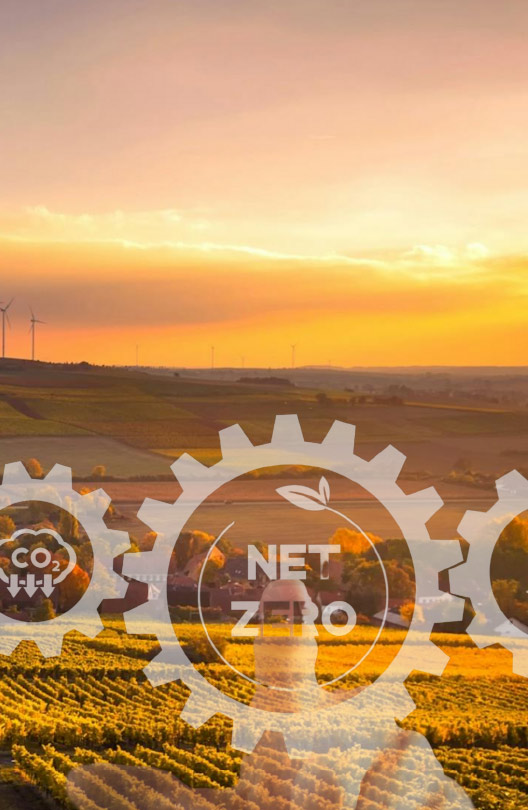THIS ARTICLE AT A GLANCE
CONTACT ETS
If you have any questions or would like to discuss further what you should be doing, ETS is here and willing to help.
Call 0117 205 0542
Email enquiries@energy-ts.com
Submit a contact form
CHECK OUR SERVICES
The Tension between Indoor Air Quality and Energy Management

The Predicament
It is perhaps more than slightly repetitive to say that the COVID-19 pandemic has caused a level of disruption to lives and business across the globe that hasn’t been seen in at least a generation.
However, after we’ve all spent the last months hunkered down, followed the rules, and are now in a position to return to some level of ‘new normality’, the question arises as to how buildings, in particular commercial offices and workplaces, can be reactivated in such a way as to address the understandable concerns of occupants and tenants, and to encourage ongoing occupation of commercial space.
There is a raft of professional guidance that has been put out to support Property and Facilities Managers to bring the buildings under their control back into operation in a safe manner – however, this often relies on a ‘one size fits all approach’ which is not tailored to the specific dynamics (or indeed issues) of a particular building. In many cases, following this generic guidance may incur increased operational costs far beyond those that may be required to meet the actual indoor air quality standards required in a particular property.
Additionally, as the short term economic outlook seems to be challenging, there will undoubtedly be further shifts in the dynamics of commercial space occupation, and an increased need to provide workplaces that engender high levels of flexibility in use – which has significant implications for the fixed building services plant and equipment present within a building, and the operational parameters to which it is controlled.
So – how do Property and Facilities Managers ensure that internal air quality is both COVID-safe and contributes to the ongoing health & wellbeing of occupants, and provides a high degree of flexibility to take account of varying occupational profiles, whilst also ensuring that operational energy bills do not skyrocket?
How ETS can help
Clearly, the first step is to get buildings reactivated in a safe manner – to read more about this initial process, please see our recent article on this here.
Even before the COVID-19 pandemic hit, the majority of buildings were not able to make use of HVAC system flexibility, and the current crisis has just further exposed this significant gap in performance.
Indeed, as many businesses look to reactivate their properties, and all the associated challenges that this brings to manage risk and staff safety appropriately in an ongoing fashion, the need for flexible and responsive control systems has never been greater – even from a pure ‘building usability’ perspective.
Internal Air Quality monitoring is not necessarily a new thing – but the vast majority of the solutions on the market simply provide monitoring which links to a virtual dashboard which must be checked by an appropriate person and physical interventions then made in an essentially live environment to adjust internal conditions – and this requirement for manual intervention is both time-consuming and can lead to overconsumption of energy and associated cost.
At ETS we work with our clients to provide IAQ solutions that link into Building Management and Control Systems, so that HVAC equipment operation is continually adjusted on the basis of a blend of parameters (including temperature, CO2, humidity, Particulate Matter, VOCs, etc.) to ensure the continued provision of optimal internal conditions, whilst maintaining a keen eye on energy consumption to avoid overspend.
This, combined with our industry-leading data, analytics and aM&T capabilities, means that we can deploy solutions to meet the exact needs of specific properties, whilst maintaining a firm grip on cost and carbon, across entire portfolios throughout the UK and Europe.
The short-term economic future currently seems to be full of uncertainty, but it is never too late to future-proof your properties against wasted energy costs and poor performance.
As an example, ETS is currently saving one of our clients over 25% on annual energy costs using our blend of independent building controls know-how and ongoing cost reduction support.
If you need assistance, then please do get in touch with us and we can help – no matter the size or nature of your building, or how big your property portfolio is.
Final thoughts
If you are looking for an energy management system that is tailored to your business needs, ETS can provide you with 25 years of experience in dramatically improving energy efficiency and reducing environmental impacts. Whether your businesses have individual assets or large international portfolios, ETS can assist you in saving substantial amounts of money while significantly reducing your carbon performance.
To discuss your requirements, get in touch. You can contact us by calling 0117 205 0542 or drop us an email at enquiries@energy-ts.com.
The Predicament
It is perhaps more than slightly repetitive to say that the COVID-19 pandemic has caused a level of disruption to lives and business across the globe that hasn’t been seen in at least a generation.
However, after we’ve all spent the last months hunkered down, followed the rules, and are now in a position to return to some level of ‘new normality’, the question arises as to how buildings, in particular commercial offices and workplaces, can be reactivated in such a way as to address the understandable concerns of occupants and tenants, and to encourage ongoing occupation of commercial space.
There is a raft of professional guidance that has been put out to support Property and Facilities Managers to bring the buildings under their control back into operation in a safe manner – however, this often relies on a ‘one size fits all approach’ which is not tailored to the specific dynamics (or indeed issues) of a particular building. In many cases, following this generic guidance may incur increased operational costs far beyond those that may be required to meet the actual indoor air quality standards required in a particular property.
Additionally, as the short term economic outlook seems to be challenging, there will undoubtedly be further shifts in the dynamics of commercial space occupation, and an increased need to provide workplaces that engender high levels of flexibility in use – which has significant implications for the fixed building services plant and equipment present within a building, and the operational parameters to which it is controlled.
So – how do Property and Facilities Managers ensure that internal air quality is both COVID-safe and contributes to the ongoing health & wellbeing of occupants, and provides a high degree of flexibility to take account of varying occupational profiles, whilst also ensuring that operational energy bills do not skyrocket?
How ETS can help
Clearly, the first step is to get buildings reactivated in a safe manner – to read more about this initial process, please see our recent article on this here.
Even before the COVID-19 pandemic hit, the majority of buildings were not able to make use of HVAC system flexibility, and the current crisis has just further exposed this significant gap in performance.
Indeed, as many businesses look to reactivate their properties, and all the associated challenges that this brings to manage risk and staff safety appropriately in an ongoing fashion, the need for flexible and responsive control systems has never been greater – even from a pure ‘building usability’ perspective.
Internal Air Quality monitoring is not necessarily a new thing – but the vast majority of the solutions on the market simply provide monitoring which links to a virtual dashboard which must be checked by an appropriate person and physical interventions then made in an essentially live environment to adjust internal conditions – and this requirement for manual intervention is both time-consuming and can lead to overconsumption of energy and associated cost.
At ETS we work with our clients to provide IAQ solutions that link into Building Management and Control Systems, so that HVAC equipment operation is continually adjusted on the basis of a blend of parameters (including temperature, CO2, humidity, Particulate Matter, VOCs, etc.) to ensure the continued provision of optimal internal conditions, whilst maintaining a keen eye on energy consumption to avoid overspend.
This, combined with our industry-leading data, analytics and aM&T capabilities, means that we can deploy solutions to meet the exact needs of specific properties, whilst maintaining a firm grip on cost and carbon, across entire portfolios throughout the UK and Europe.
The short-term economic future currently seems to be full of uncertainty, but it is never too late to future-proof your properties against wasted energy costs and poor performance.
As an example, ETS is currently saving one of our clients over 25% on annual energy costs using our blend of independent building controls know-how and ongoing cost reduction support.
If you need assistance, then please do get in touch with us and we can help – no matter the size or nature of your building, or how big your property portfolio is.
You can contact us by calling 0117 205 0542 or drop us an email at enquiries@energy-ts.com.
Related Article
8 Ways Businesses Can Reduce Energy Use in the Workplace This Winter
Discover how to comply with ESOS Phase 4 and unlock energy-saving opportunities for your business. This guide explains the requirements, highlights key deadlines, and provides actionable strategies. Learn how energy audits, tailored action plans, and expert support can reduce costs, improve efficiency, and align your organisation with sustainability goals.
ESOS Action Planning: Complying with Phase 4 and Implementing Energy Saving Strategies
Discover how to comply with ESOS Phase 4 and unlock energy-saving opportunities for your business. This guide explains the requirements, highlights key deadlines, and provides actionable strategies. Learn how energy audits, tailored action plans, and expert support can reduce costs, improve efficiency, and align your organisation with sustainability goals.
Important Update: What You Need to Know about ESOS Phase 3
Time is ticking for the ESOS Phase 3 deadline. The Environment Agency announced that the reporting system is available now. For organisations qualifying for ESOS Phase 3, the deadline for submitting a compliance notification is 5 June 2024, and organisations should still look to meet this compliance notification deadline where possible.









































































